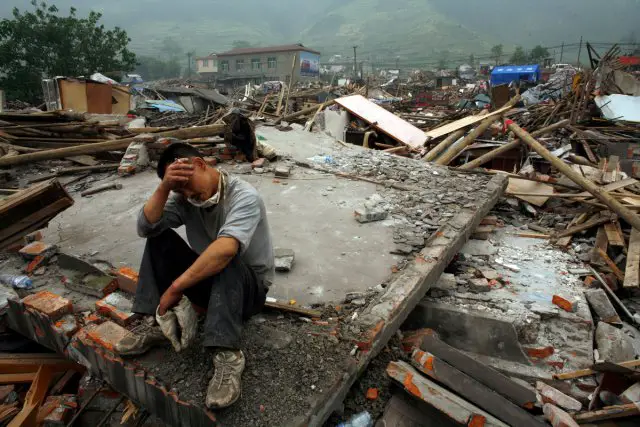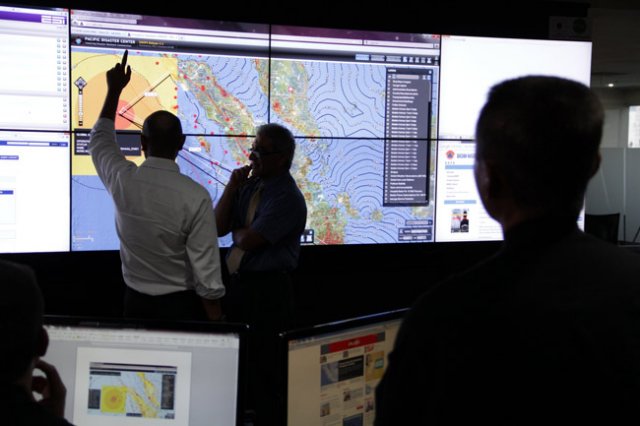 |
|||
|
APHS 2015
ASIA PACIFIC HOMELAND SECURITY 27 - 30 October 2015 Singapore |
|||
|
Press Release at APHS 2015
|
|||
|
|
|||
|
|
|||
| Public and private sectors must cooperate to manage natural disasters in Asia Pacific | |||
|
With 70 per cent of the world’s natural disasters occurring in Asia Pacific in 2014 resulting in a total cost of US$59.6 billion in economic losses, industry leaders today have called for far greater cooperation between the public and private sectors in disaster preparation and response across the region.
|
|||
|
|
|||
 70 per cent of world's natural disasters occuring in Asia Pacific in 2014 70 per cent of world's natural disasters occuring in Asia Pacific in 2014 |
|||
|
|
|||
|
Building a much greater resilience to natural disasters will be high on APHS’ agenda, particularly in the aftermath of recent events. Also, statistics from a United Nations Economic and Social Commission for Asia and the Pacific (ESCAP) report show that more than 6,000 people in Asia Pacific have lost their lives as a result of natural disasters in 2014.
Arnel Capili, Head of Operations at the ASEAN Coordinating Centre for Humanitarian Assistance on Disaster Management (AHA Centre) and Nathaniel Forbes, Director of the Forbes Calamity Prevention, both believe that the existing division of responsibilities between public and private sectors is a mistake. Forbes said that without the full cooperation and support of the private sector, it is very difficult for a government or disaster relief organisation to shoulder the burden of responding to a major disaster that requires a massive amount of resources. “There must be an established mechanism for the government and the private sector to talk in advance of a disaster. You can look at the crucial three as an example – water, power and communications – where are we most likely to have a problem? Where have we lost communication lines in the past as a result of disasters? I don’t know if the governments will know that but I bet you the cell phone company does. “The real issue is that around 90 per cent of the infrastructure and resources in many countries are owned by the private sector. The electric utilities are a private entity, the water utilities are a private entity, and the toll road operator is a private entity. So without their cooperation and support you can see it becomes very difficult,” says Mr. Forbes, who will be speaking at the inaugural Asia Pacific Homeland Security (APHS) conference and exhibition to be staged in Singapore from 27 – 30 October 2015 at the Marina Bay Sands. |
|||
|
|
|||
 AHA Pacific Disaster Centre AHA Pacific Disaster Centre |
|||
|
|
|||
|
Established in response to the growing expectations of governments, critical businesses and industries, the event is dedicated to finding both immediate and sustainable solutions across homeland and civil security. In addition to natural disasters, APHS will also cover industrial crises and homeland security, looking at threats such as crossborder terrorism, nuclear disasters and cybercrime. “The collaboration between both sectors becomes even more important in the recovery phase. This is when the private sector can add the most value because there are not many international organisations focused on managing recovery after a disaster. “The Government and public sector have to work together with the private sector, civil society and international groups in order to ensure that things get moving quickly. The partnerships and coordination of recovery efforts between both sectors is key in ensuring that the affected communities get the right kind of assistance,” says Mr. Capili. Furthermore, according to the East Asia Pacific Economic Update released by the World Bank, East Asia accounts for onethird of the global economic growth. Jimmy Lau, Chairman of the organising firm COGES Asia states: “Asia Pacific is a very dynamic region and more importantly, it’s a market with strong security needs. While it does boast very strong economic growth, the region is also obviously at risk of natural disasters, as well as serious threats to its homeland security. We look forward to bringing various stakeholders together at APHS to tackle very current and often complex issues through this platform.” |














